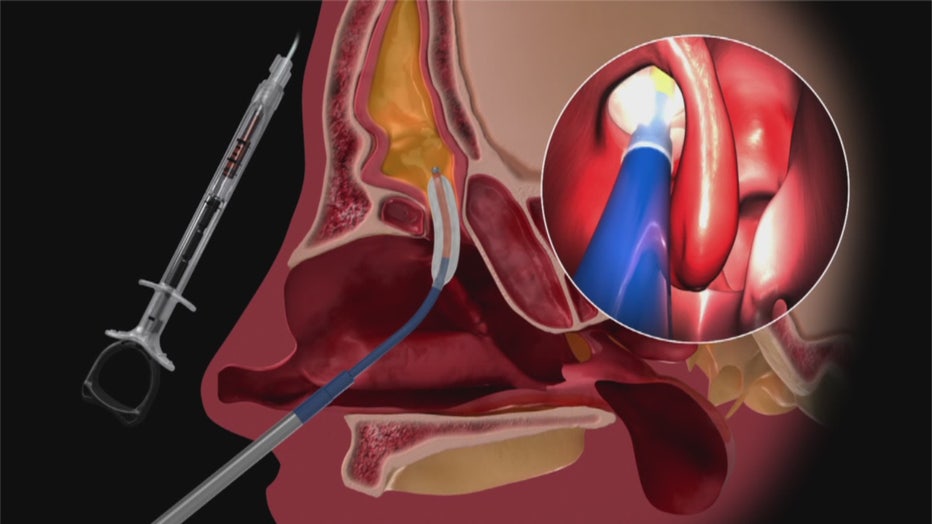Innovative sinus balloon helps adults suffering from chronic sinusitis
MARINA DEL REY, Calif. - According to the CDC, 12% of all US adults suffer from chronic sinusitis, which equates to 29 million Americans dealing with recurrent and pounding sinus infections.
As common as it is, many people do not even realize they have it and attribute symptoms to allergies or migraines.
Symptoms for chronic sinusitis include runny nose, headache pain, and pressure. It is a health issue that has caused tens of millions of lost workdays and billions of dollars in medical costs.
Sinusitis treatments include steroids, allergy shots, nasal irrigation, and antibiotics, but when those measures don't work the next step is surgery to remove the infected tissue. If the medications fail, the usual last resort is endoscopic sinus surgery requiring a general anesthetic and a painful week-long recovery.
There is now an innovative and noninvasive way to cure your chronic sinus infection.

“About one in six have it chronically which means they have it for more than three months,” Dr. Farhad Sigari of Del Rey Sinus and Allergy Institute.
The procedure takes just minutes under a local anesthetic, and it's about 95% effective according to multiple studies.
“To make a good analogy, if a door to a room is not open enough the sinus surgeon will remove the whole wall instead of just opening the door.,” said Dr. Sigari.
It's a noninvasive in-office procedure with localized anesthesia instead of general anesthesia, according to Dr. Sigari.
Patients recover in about one day, avoid the operating room, and stay healthier afterwards.
So, many do not have to go back to prescribed medications related to chronic sinusitis. Another bonus is they stop missing work, according to Dr Sigari.
The procedure also costs thousands less than a hospital endoscopy, so it represents a tremendous saving for the healthcare system.
An estimated 30 percent of sinus surgeons are currently using the less invasive sinus balloon right now, Sigari said.
“It's a little bit of a slow transition partly because it’s not being taught in residency programs yet,” said Dr. Sigari
He also adds that in the coming years he thinks we can expect to see a lot more of these in-office procedures and fewer trips to the operating room.

